Today’s post is about the animals that start with L. From lion to lumpfish, we put together a fun list of different types of animals that start with the letter L!
On this list of animals beginning with L, you will find different types of mammals, birds, reptiles, and more.
Also, you will learn a ton of fun things about these animals that begin with L—these incredibly interesting creatures have more to them than meets the eye!
So, if you’re looking this up as a student or parent with homeschooling kids, you’re in the right place.
Have we missed your favorite animal that starts with the letter L? Then let us know in the comments, and we will add it to this article.
Animals That Start With L
Here are some of the most exciting animals that begin with the letter L.
Lesser Flamingo
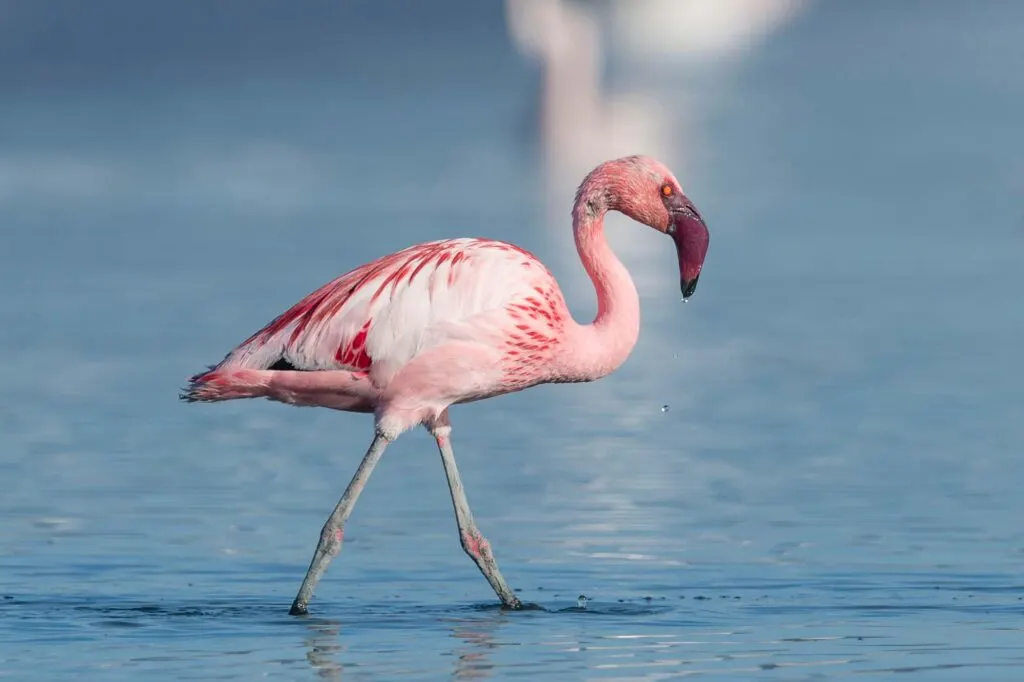
Lesser flamingos are believed to have the largest population among the flamingo species.
About 2 feet in height, lesser flamingos are among the smallest of the species despite being tall for most birds.
They have the same all-pink body, including their bills with a small head and long neck.
Leopard
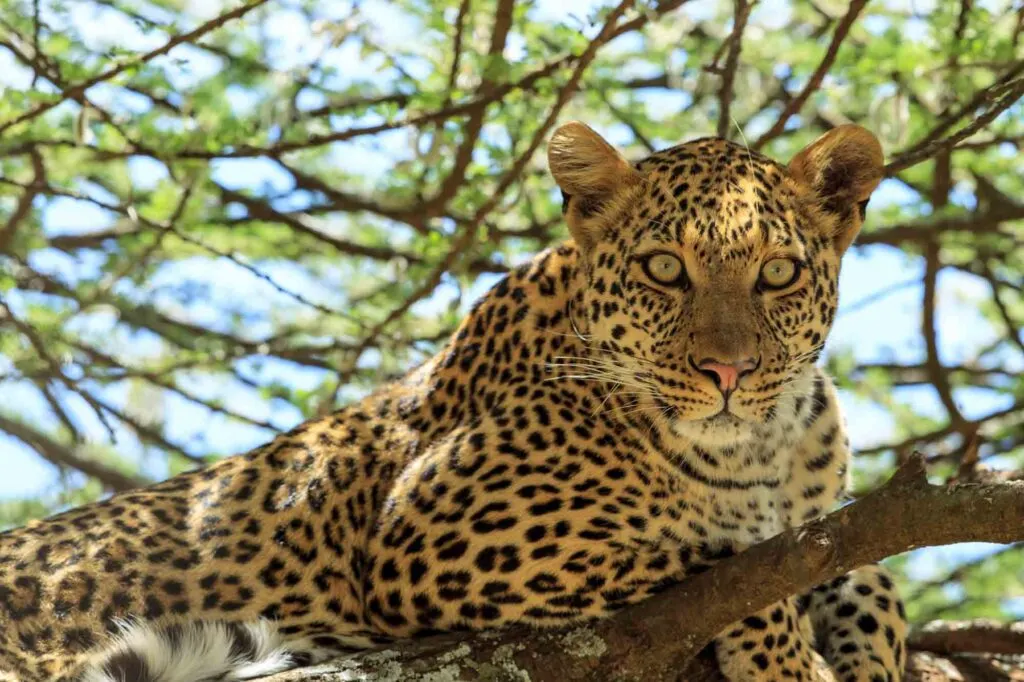
One of the big cats, the leopard, has a speed of 36 mph. The dark spots on their fur are referred to as “rosettes” because it resembles roses.
These nocturnal animals are intelligent apex predators with excellent tree climbing skills. Of course, leopards should be on a list of animals that start with L.
Large Leaf-Eating Ladybug
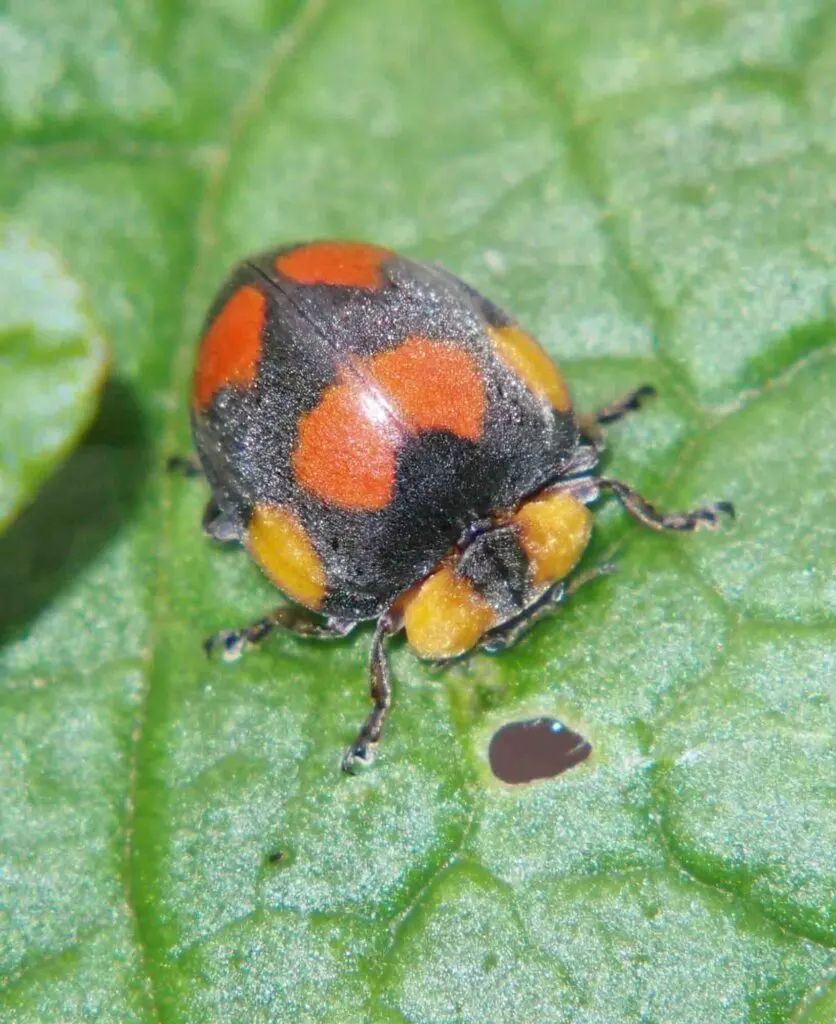
Yes, these are large, leaf-eating insects, though these are more of lady beetles than ladybugs.
The species have a red body with huge black spots. Their color serves as a reminder to their predators that they’re actually terrible in taste.
Leopard Cat
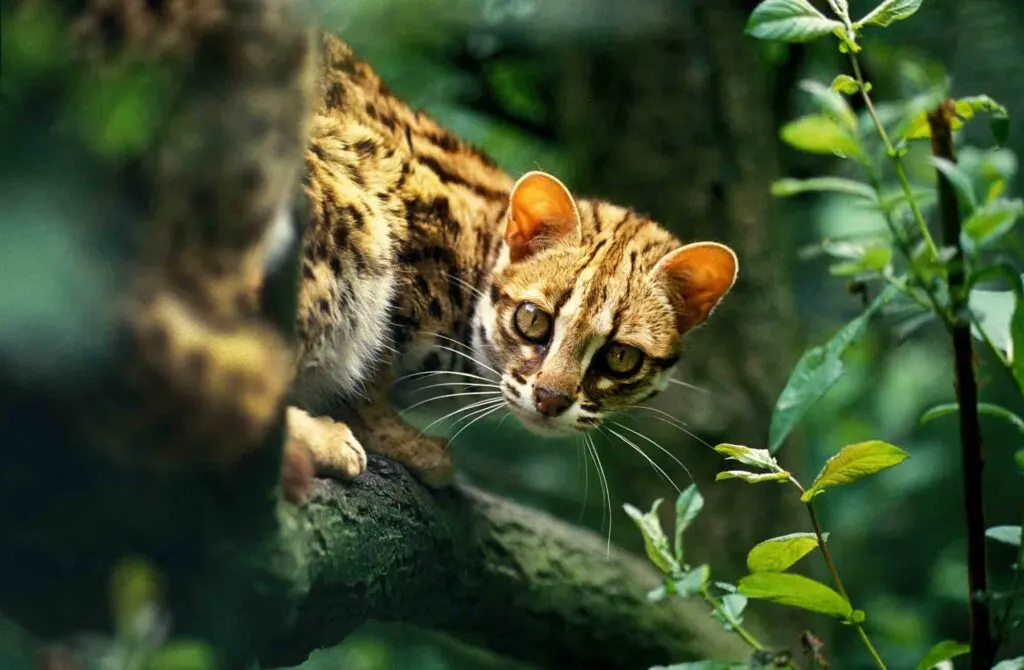
Native to Asia except for North Asia, they’re small wild cats with leopard pattern adorning their entire body.
They have slight webbing on their toes, which makes them fit for swimming. One of the few cat species that do not detest swimming either.
Leopard Tortoise
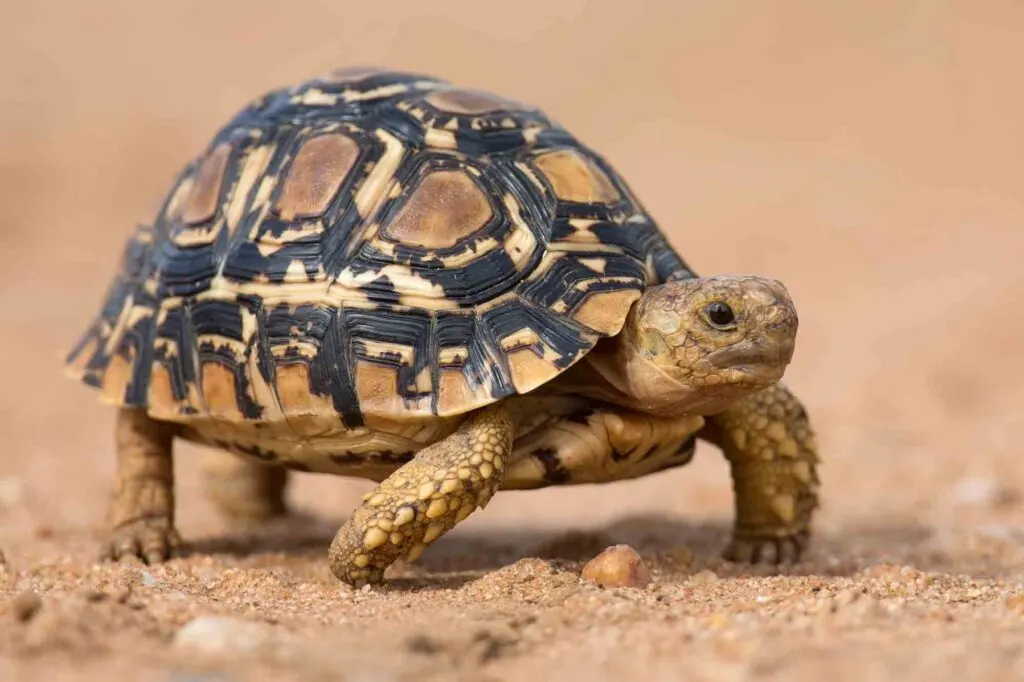
This large tortoise species has a shell with the same color scheme as the leopard, hence the name.
The species feed on both plants and bones. Bone consumption is especially important to provide calcium for their shell.
On top of that, leopard tortoises are the only tortoise species that can swim and raise their head. They are common animals in the savannas of eastern and southern Africa.
Leopard Iguana
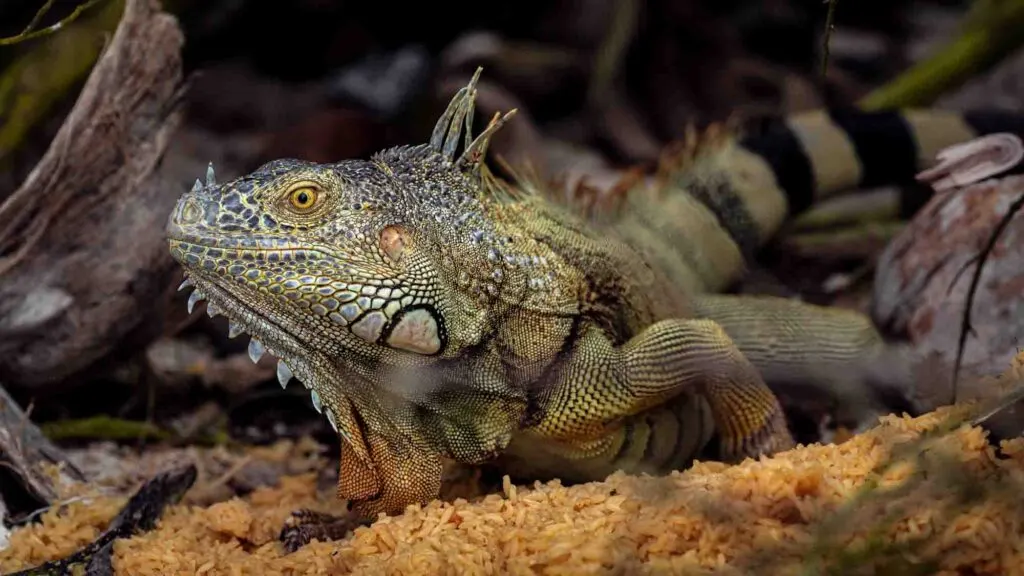
The lizard species has a leopard print body and is native to South America, mainly found in Chile, Argentina, and the Patagonian Desert.
They feed on other insects. They are characterized by a sharp jaw and a triangle-shaped head.
Leopard Seal
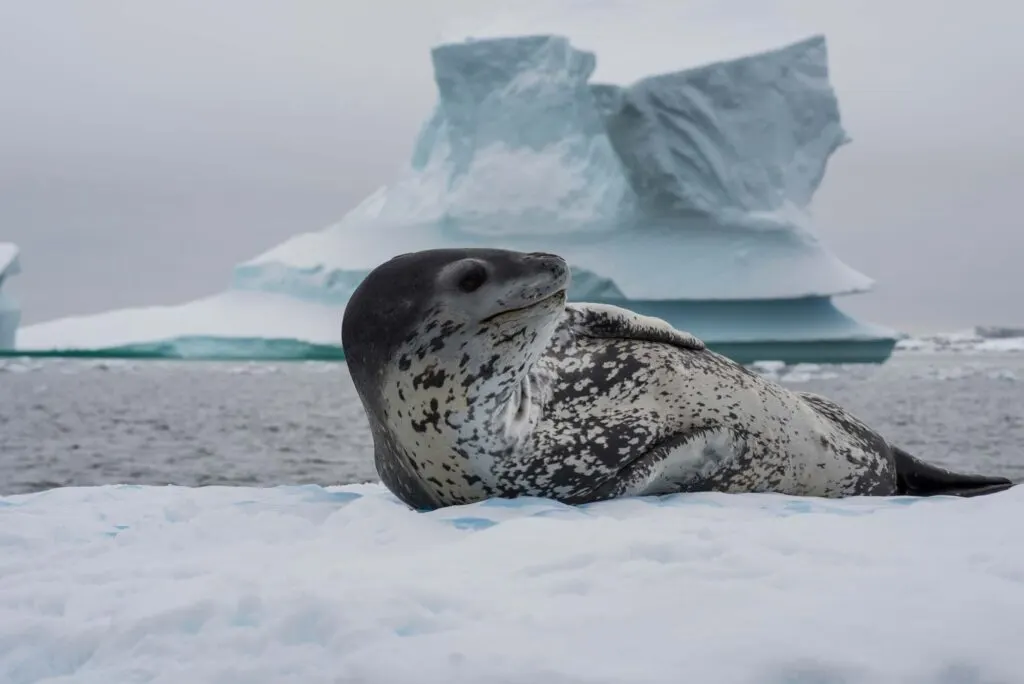
The third largest seal species in the Antarctic region, only orcas have the capability to hunt these vicious beings.
Except for breeding, you’ll never find them with other seals. Their mouth is slightly curved, creating the illusion they’re smiling. In reality, they’re extremely aggressive, with eyes always on the meal.
Little Whip Snake
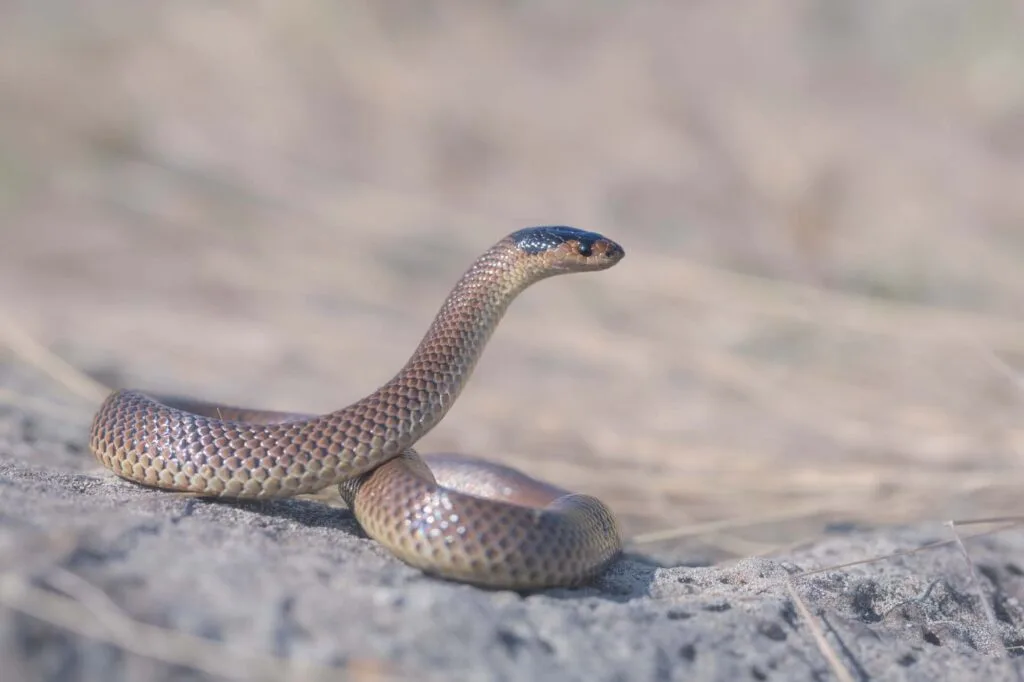
The venomous little whip snake gets their name from their tail, which reminds one of a whip.
Counting their tails, they’re about 18 inches in length. The native Australian species is specifically found in New South Wales, where they move around on the grass.
Lion
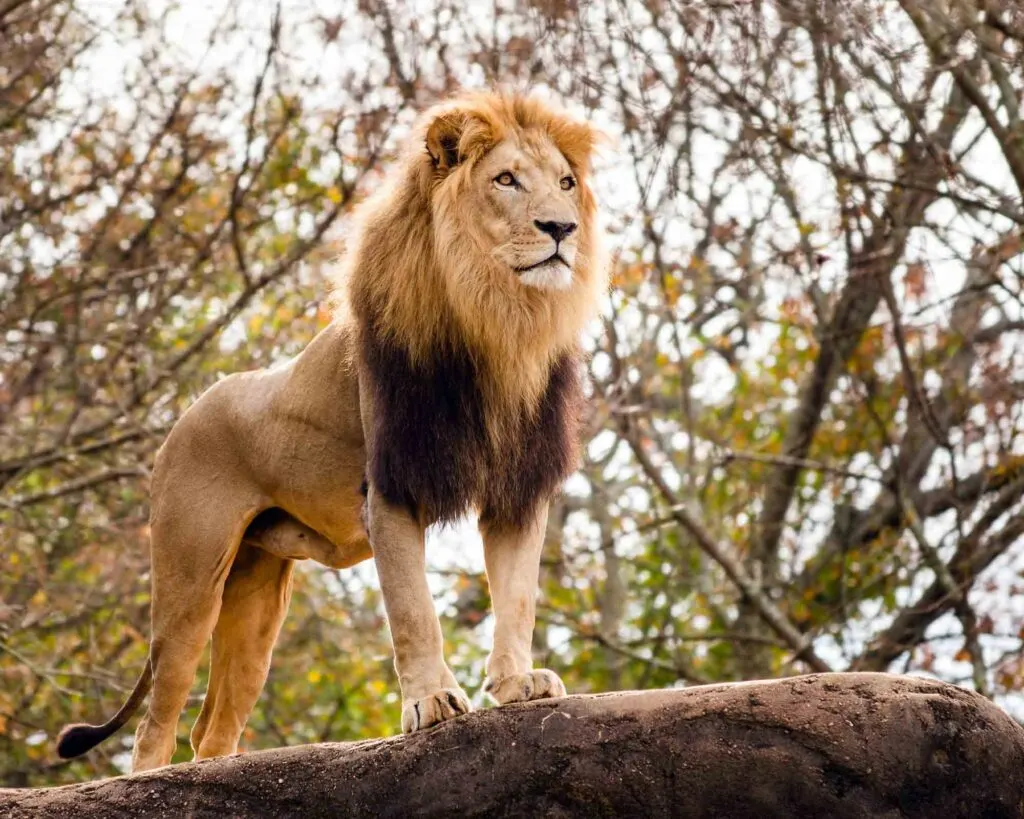
For a list of animals that start with L, it would be odd if we left lions out.
Lions have spots when they’re young, but as they mature, the spots disappear.
The manes of male lions only grow bigger and darker as they age. The manes act as a barrier against attacks on their head and neck.
Lappet-Faced Vulture
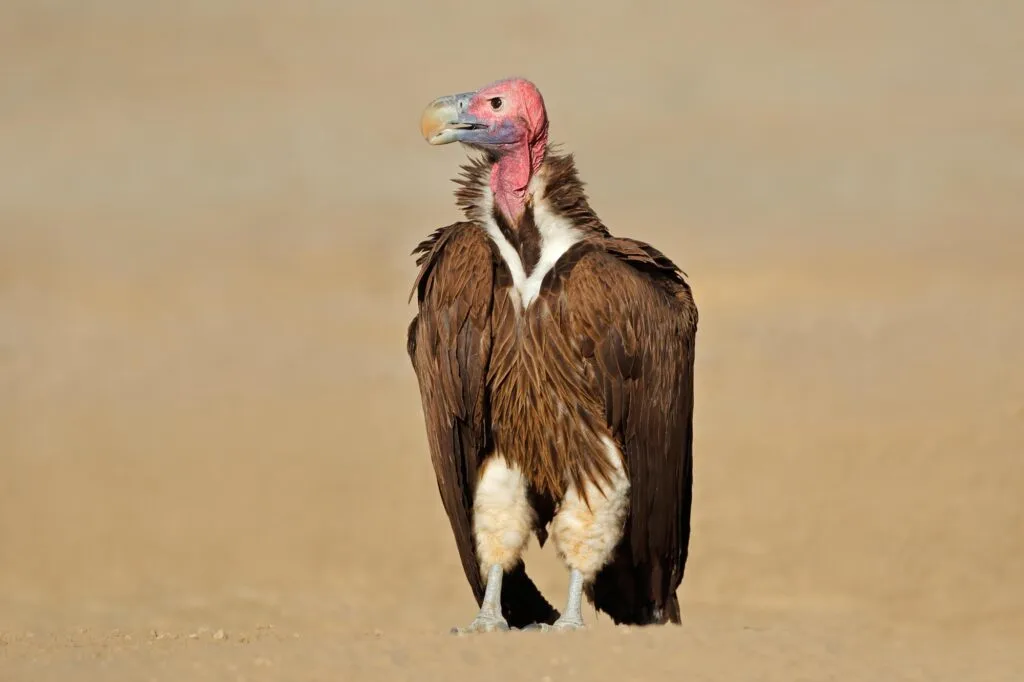
Lappet-faced vultures are Old World vultures, also known as Nubian vultures. They are among the largest flying birds measuring 37-45 inches in body length, with a wingspan of 8.2-9.5 feet.
The lappet name comes from the patch of loose skin on their face, which one can mistake for ears at first glance. Highly aggressive, their beaks can break through almost any kind of hard skin.
Lazarus Lizard
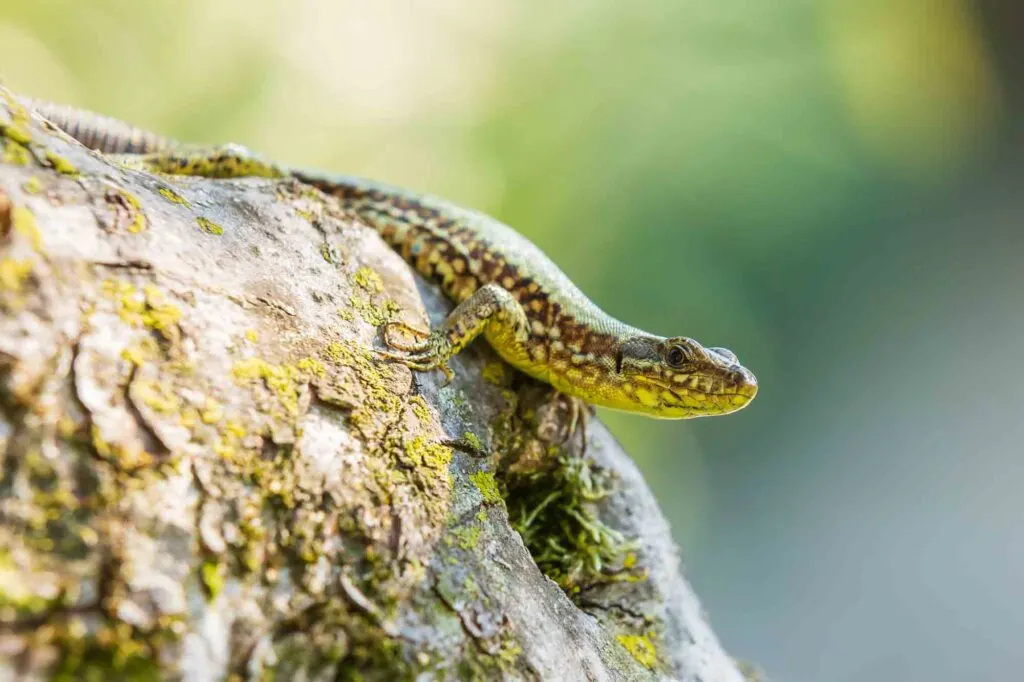
The name of the species changes depending on the area. In Cincinnati, they’re Lazarus lizards. For Europe, they’re common wall lizards, while Americans call them European wall lizards.
The story behind Lazarus lizard name is especially interesting, as the stepson of the Lazarus family brought some of these lizards from Italy to Cincinnati.
The population grew so much in the area that the locals began calling the species by the surname of the one who introduced them.
Lamancha Goat
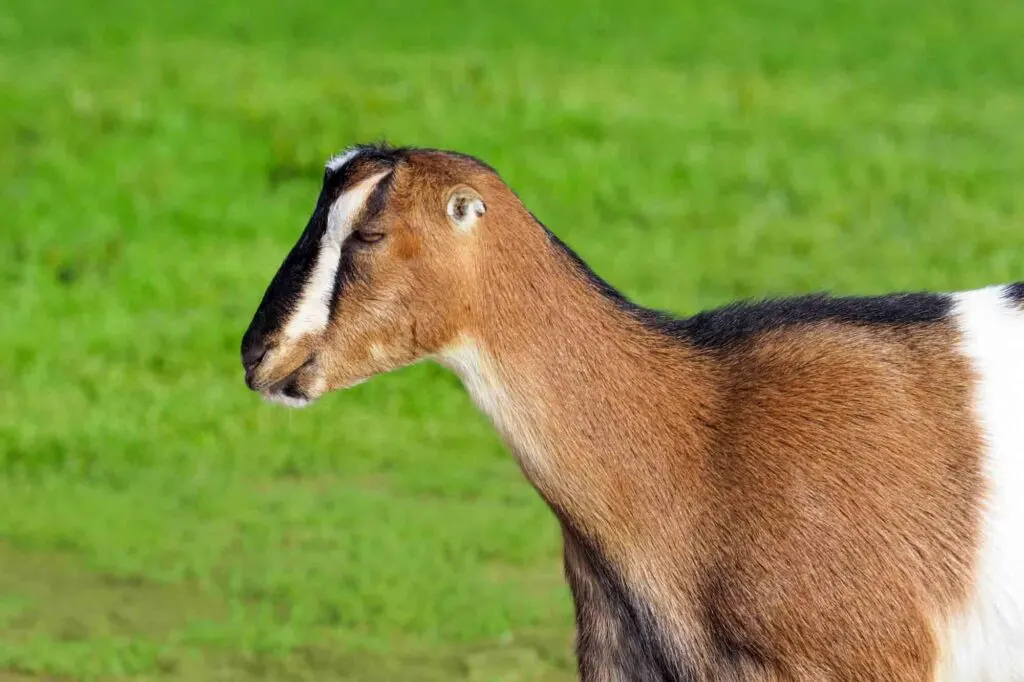
For goats, Lamancha goats are pretty tall at 3 feet. They’re famous for their ears, which are so tiny, it’s called elf ears.
They’re among the original US goat breeds. The name originates from Spanish missionaries from the 18th century who would bring small goats to North America called LaMancha.
Little Penguin
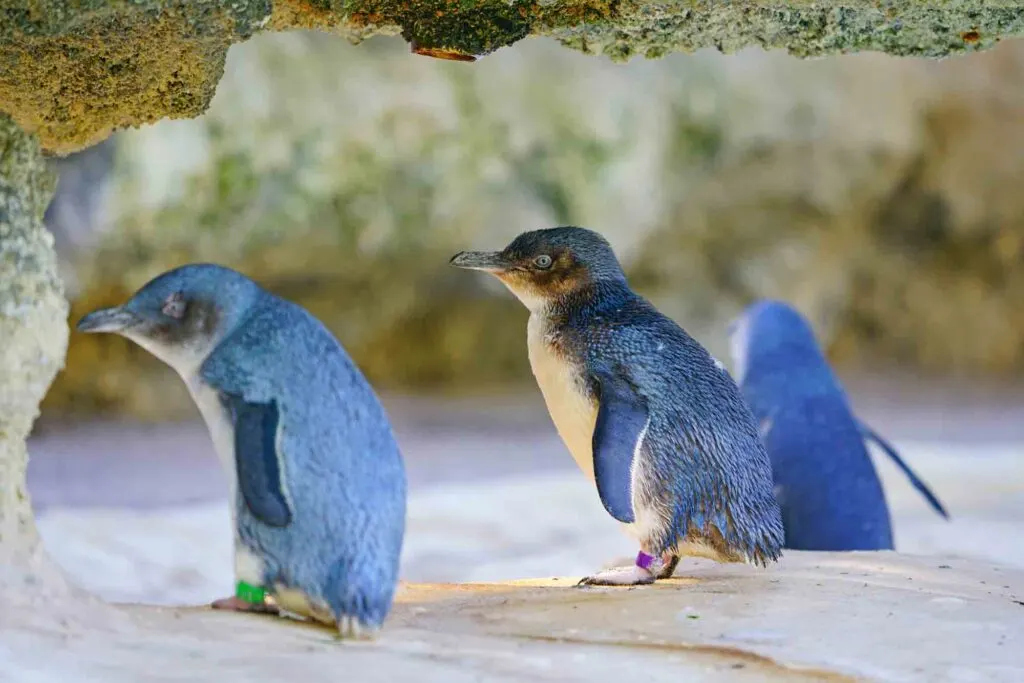
Little penguins are native to New Zealand and have pretty blue plumage.
They spend more time in the water than not, with a speed of 3.7 mph thanks to their wings, even dozing on the surface.
These penguin types are a vocal bunch with their constant growls, squawking, hissing, and braying.
Little Karoo Dwarf Chameleon
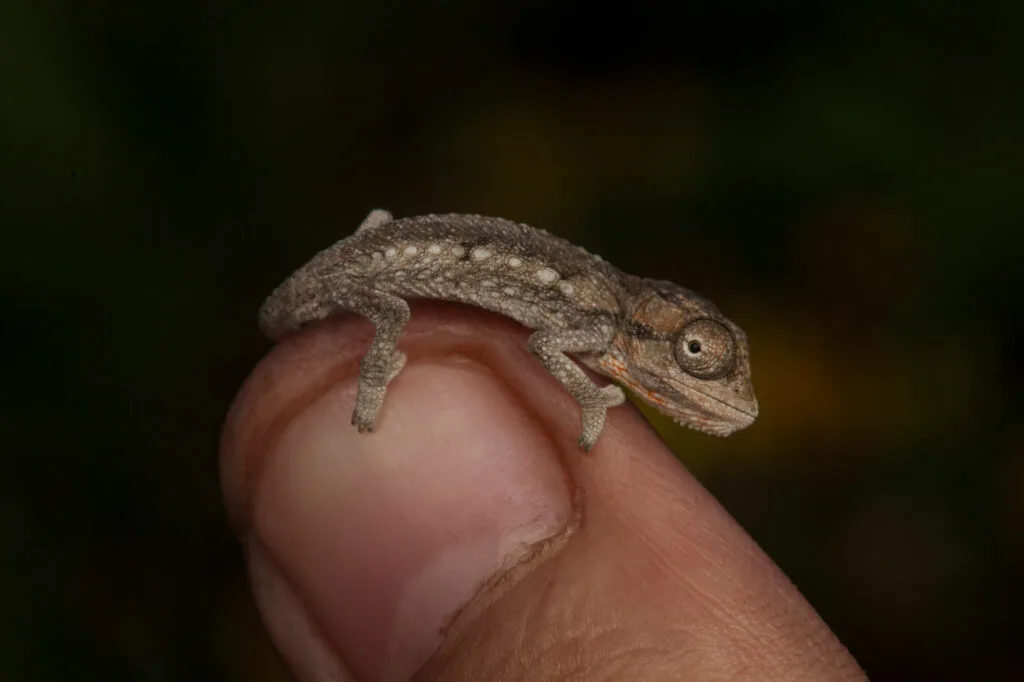
The South African native species were given their name from Little Karoo in Northern Cape.
This chameleon species prefers dry habitats and has extremely short tails. In fact, the species is no bigger than 6 inches in length with brown to gray skin.
Leatherback Sea Turtle
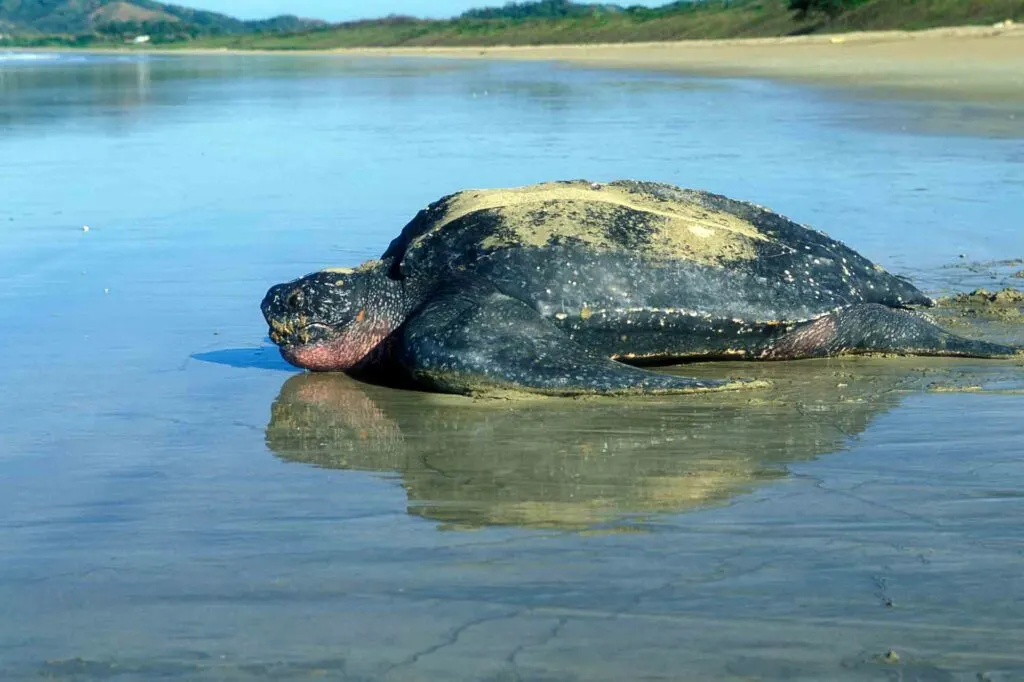
The largest species of turtles in the world, the leatherback sea turtle is also the heaviest reptile save for crocodiles.
They can weigh as much as 2,000 pounds. They’re about 5.5 feet in height and do not have shells or scales.
Long-Eared Hedgehog
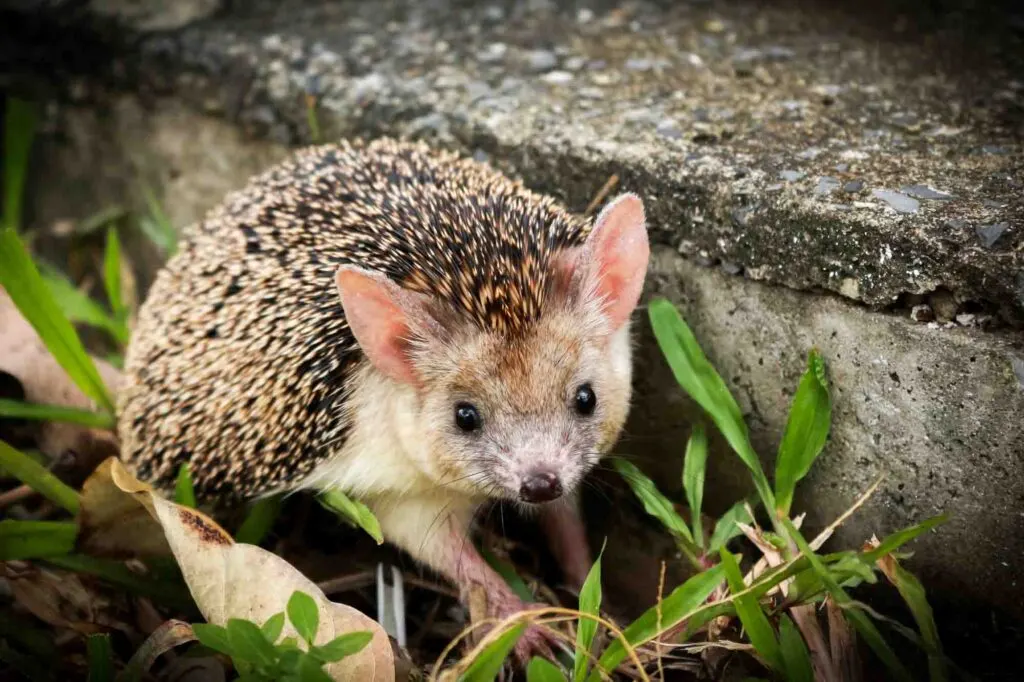
A species of hedgehog found mainly in Central Asia, long-eared hedgehogs have, yes, unusually long ears.
Quite adorable, their ears seem to help them detect predators, as does their amazing sense of smell. They either dig burrows themselves or use the ones from animals that abandoned them.
Long-Eared Chipmunk
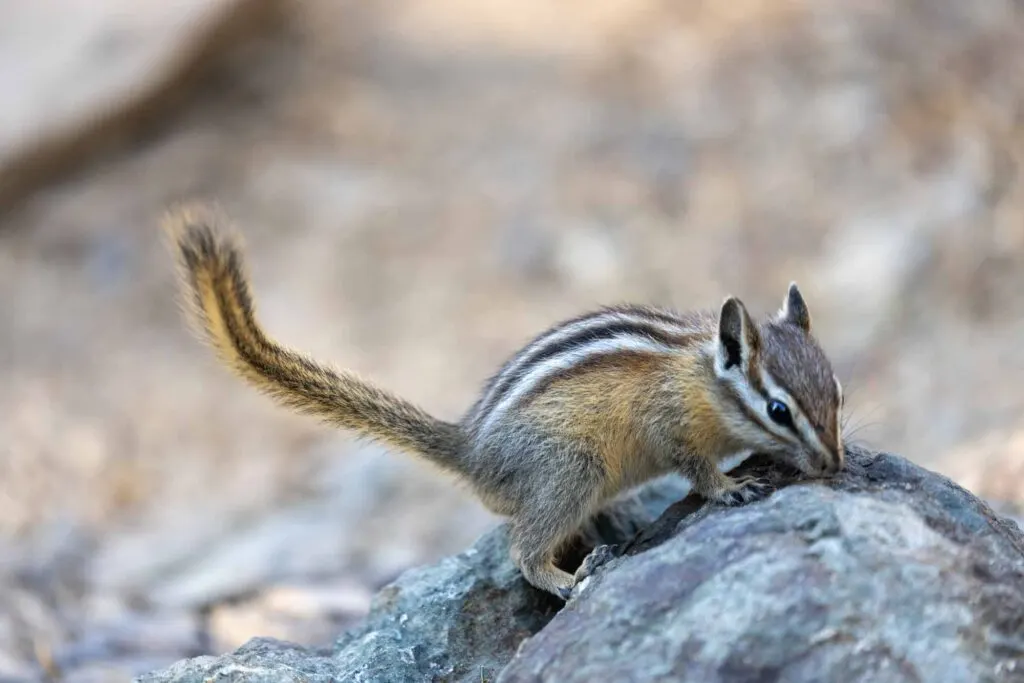
Chipmunks belong to the squirrel family, as do long-eared chipmunks. They have longer ears than other species, though the ears are still tiny.
They spend the entirety of winter and spring hibernating in dens and collecting food day and night for the rest of the year.
Lyrebird
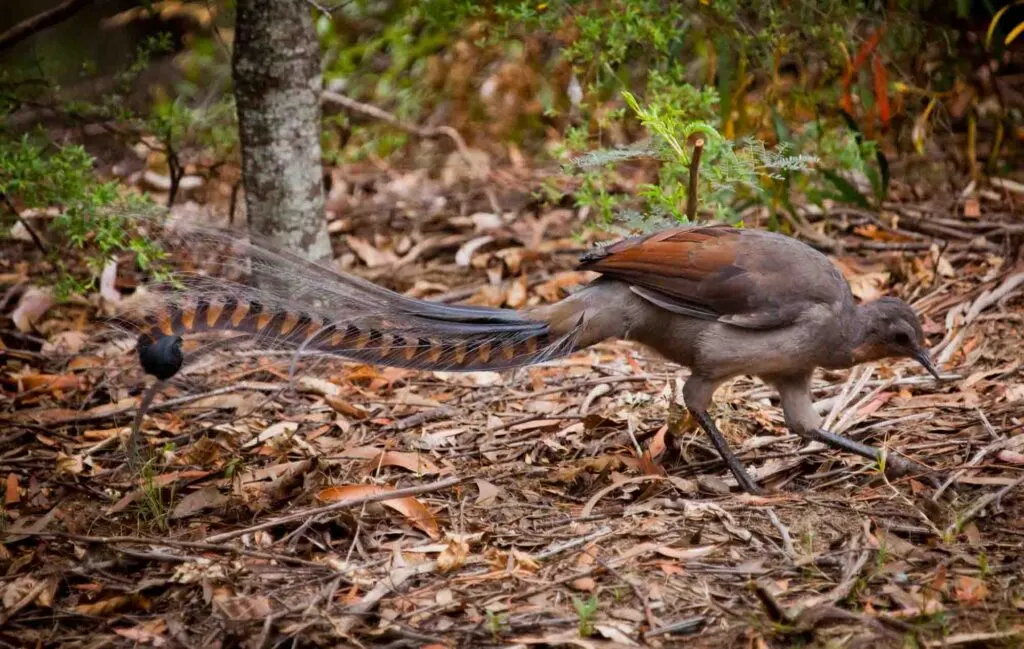
The native Australian bird species were once mistaken as pheasants due to their patterned, colorful and long tail feathers.
They’re excellent imitators, with their repertoire consisting of the human voice, dog barking, car alarms, and even the sound of a whirring chainsaw.
Lear’s Macaw
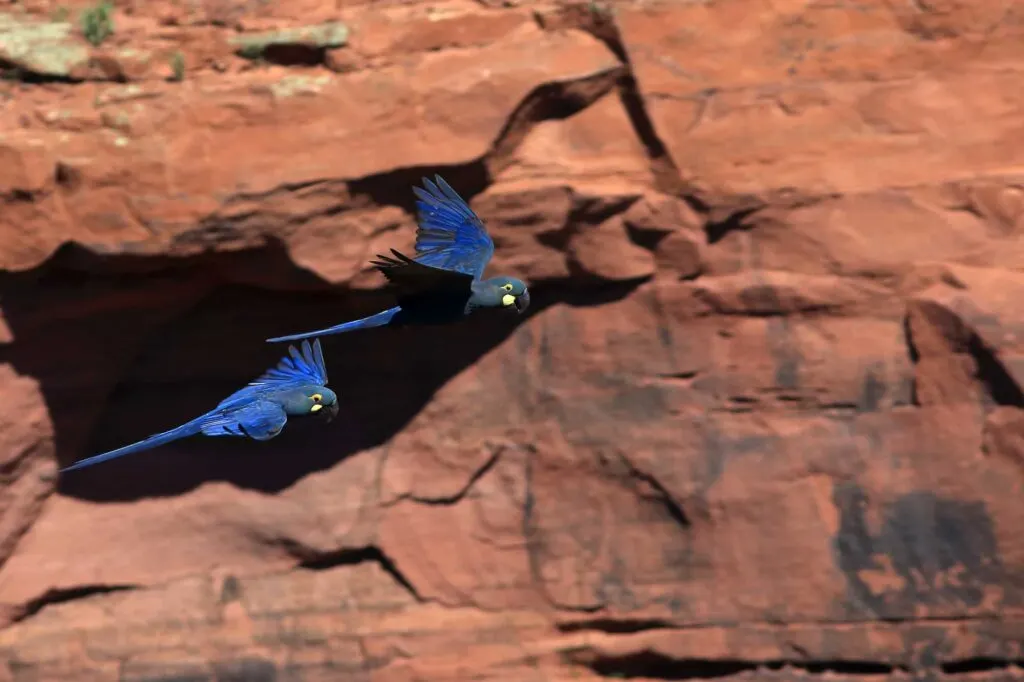
Another name for Lear’s Macaw is Indigo Macaw. Indeed, they’re a completely indigo color parrot species with roots in Brazil.
Among the animals that start with L, this parrot species has the special quality of mimicking human voices along with having a playful nature.
Long-Eared Jerboa
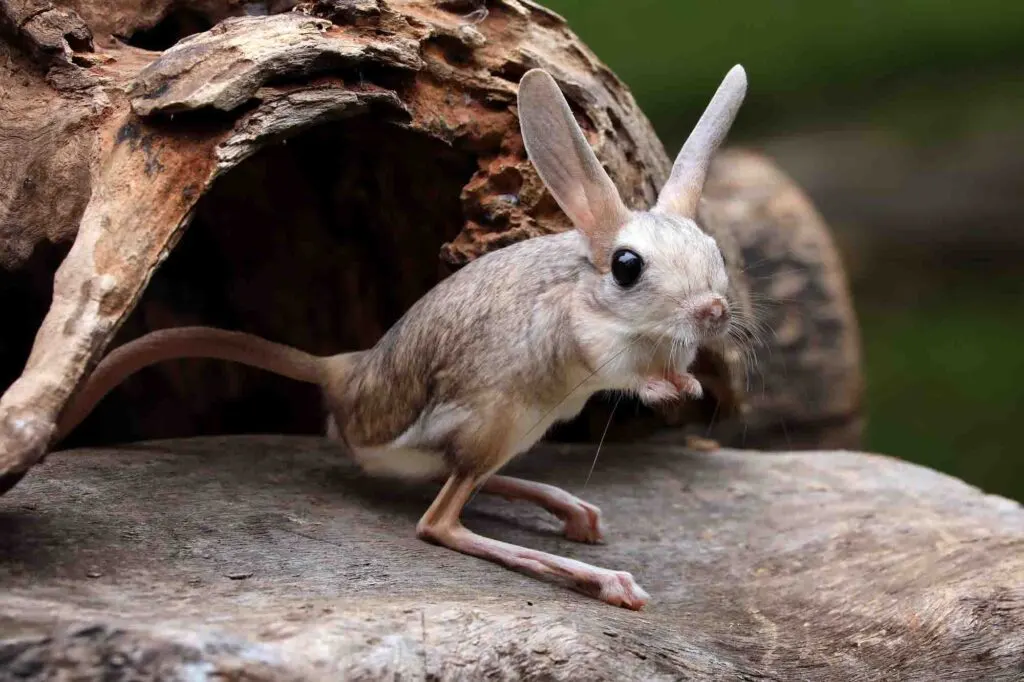
While certainly a rodent species, long-eared jerboa aren’t exactly mice. They have long tails and ears with oddly shaped heads.
Their hind legs are taller, allowing them to jump far and faster. The ears are suspected to be an adaptive trait, so they can survive the harsh desert climate and look out for predators.
Lawnmower Blenny
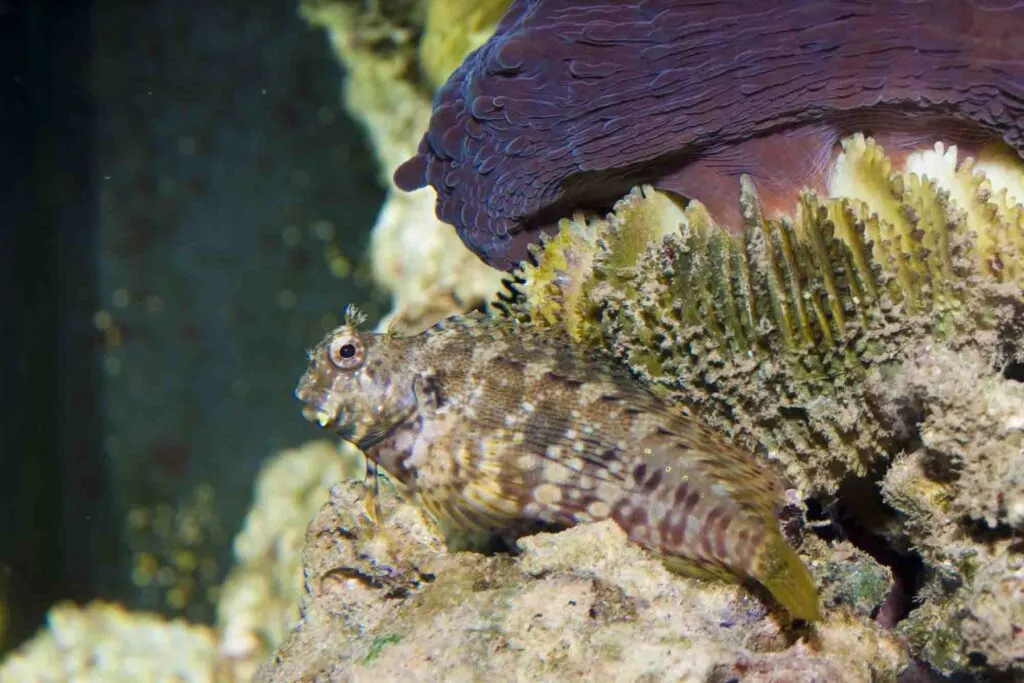
The native Australian fish species of the aquariums, their name comes from their inclination towards consuming algae which grow on the glass and rocks.
They’re about 5 inches and have teeth resembling the shape of a comb. Their love for algae makes them excellent cleaners.
Long-Nosed Leopard Lizard
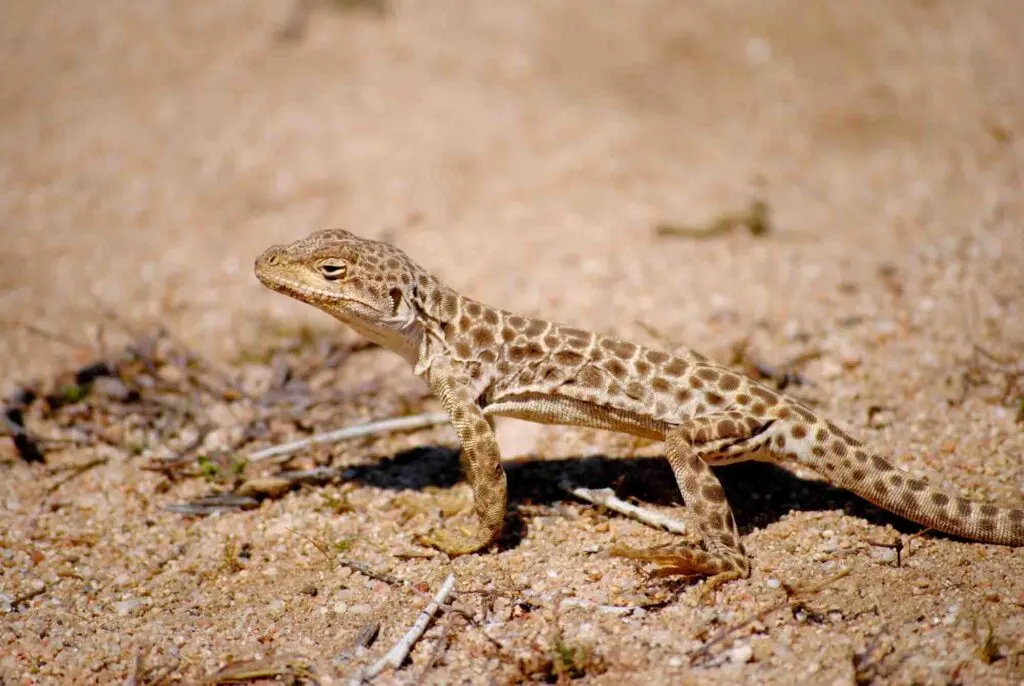
Belonging to animals that start with L, this species begins with L on pretty much every part of their name. Their name does a wonderful job of describing them too.
The lizard species has a long nose, big head, and long tail, which might surpass their entire body in height, and a leopard pattern on their body.
Lesser Horseshoe Bat
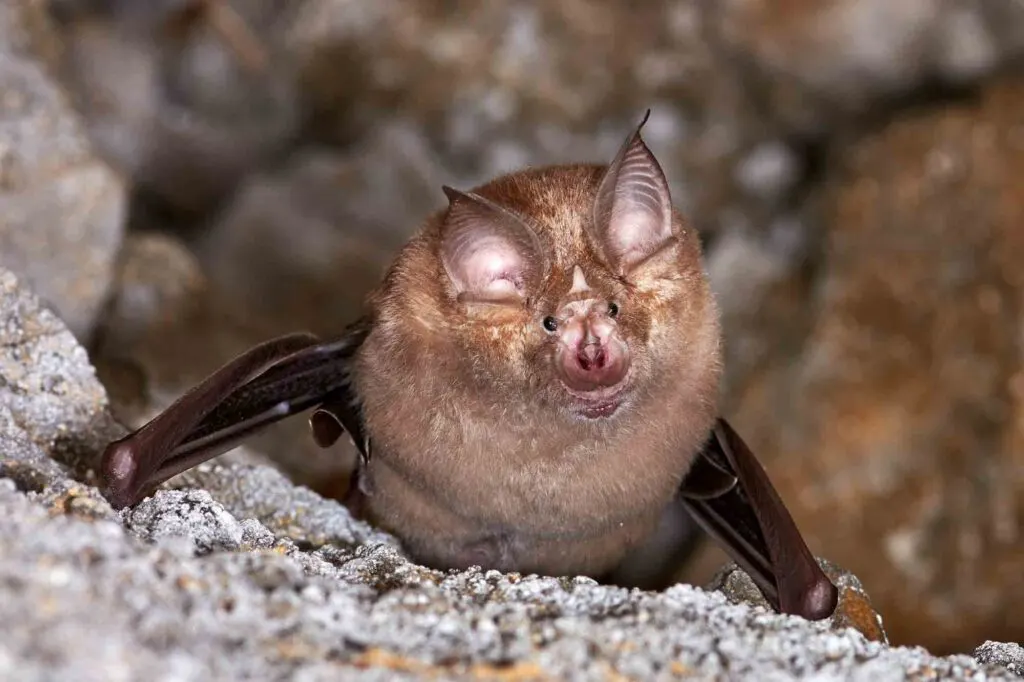
Cousins of the greater horseshoe bat, they’re capable of consuming 3000 midgets in a single night.
They have swollen eyes and mouths and are one of the smallest bats in the world. They use echolocation to find their prey while living in colonies.
Lammergeier
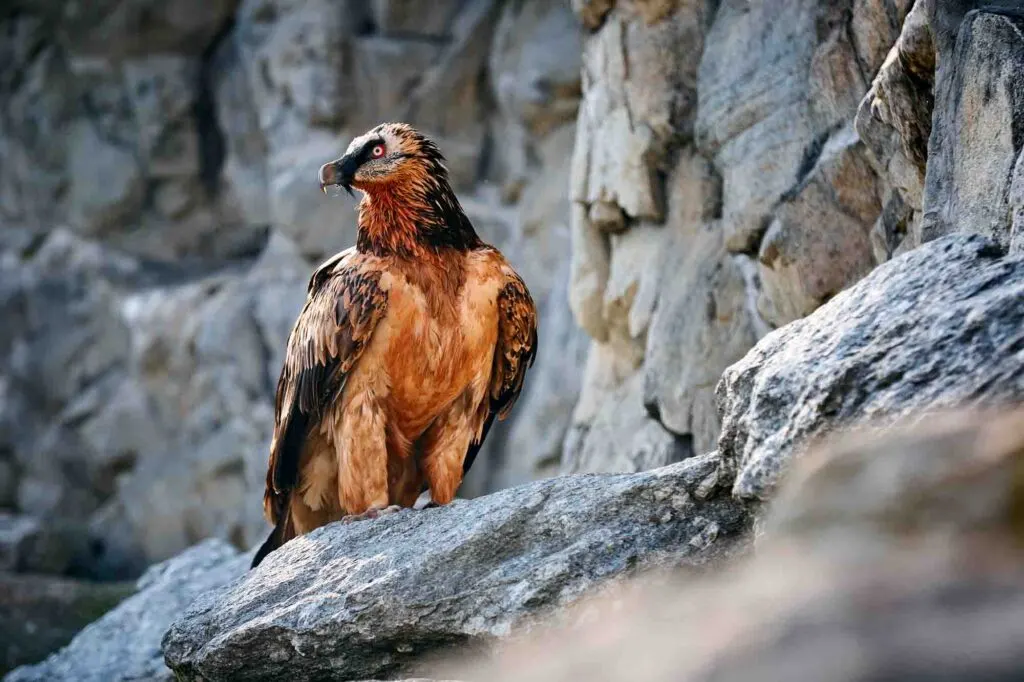
Lammergeiers are vultures, even referred to as bearded vultures. They’re the only bird species in the world who enjoy eating bone marrow.
In fact, they prefer brittle ones rather than fresh offerings. Their name comes from the German word Lammergeier, which translates to lamb vulture.
Luna Lionfish
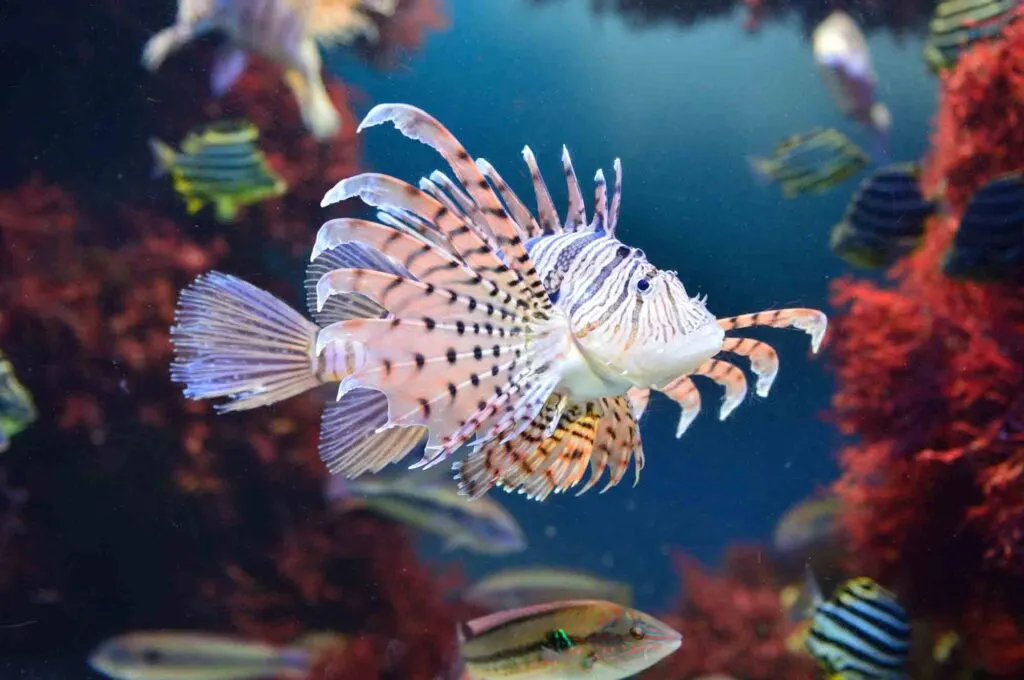
Also known as Japanese lionfish or the dragon’s beard fish, luna lionfish are fin rays of the pacific ocean.
These amazing ocean animals are, in fact, nocturnal species. They stretch their pectoral fins to corner prey and swallow them whole.
They also have venom in their spine, which can sting human skin but won’t hurt us.
Long-Eared Owl
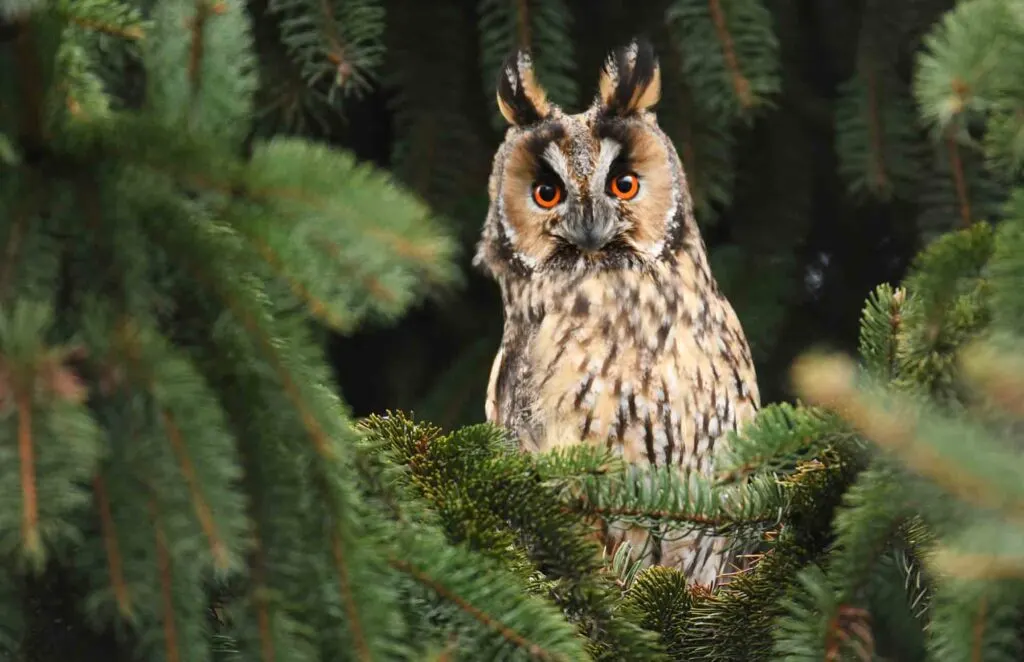
Long-eared owls are also informally called lesser horned owls. Their name comes from the tuft of hair on their head, which looks like ears.
Like most owl species, their vision and hearing qualify as beyond excellent, which they use to attack rodents in the cloak of the night.
Lesser Antillean Iguana
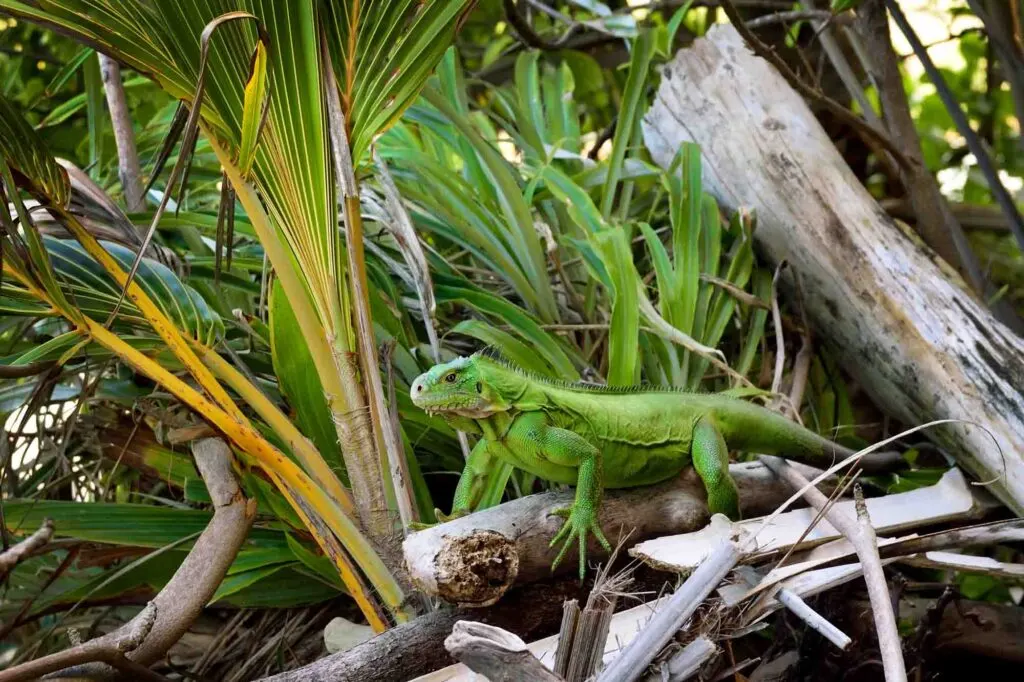
Considered sisters of the green iguana, the lesser Antillean iguana has a critically endangered status. They’re herbivores, barely reaching 15 inches in length.
They actually look like monitor lizards, only with more ivory-color scales, way smaller size, and a prominent snout. They make hissing noises similar to dog barks when they don’t like something.
Lesser Shrew
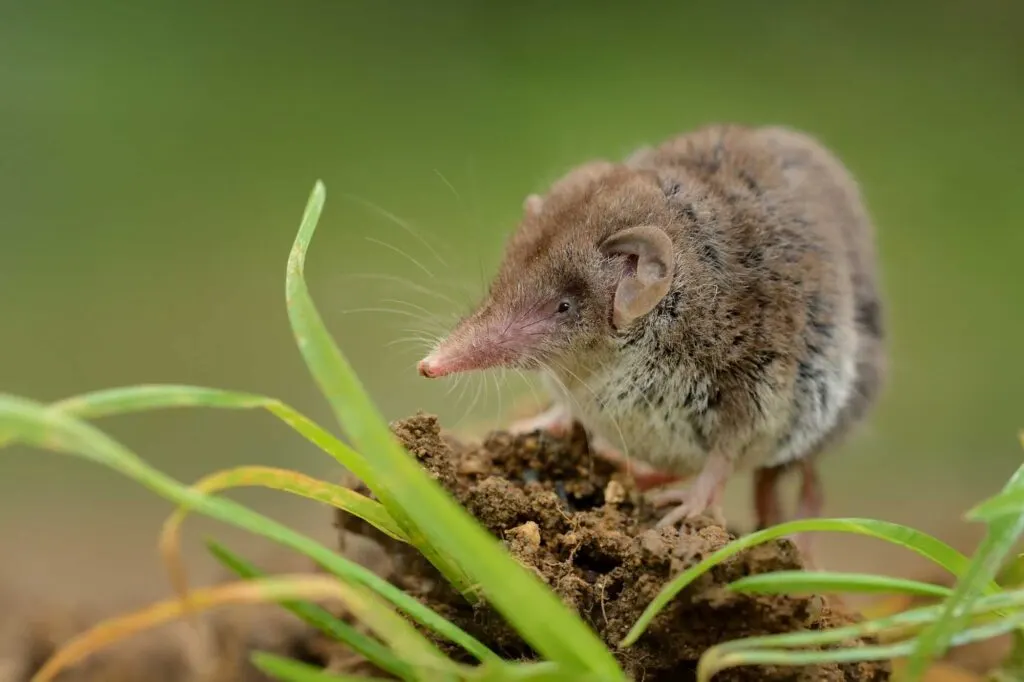
The lesser shrew is known for their white teeth and their existence all over Europe, Asia, and Africa.
They’re aggressive, only mingling with other shrews during the breeding season. They never rest, always on the search for food, which happens to be insects.
Lowland Leopard Frog
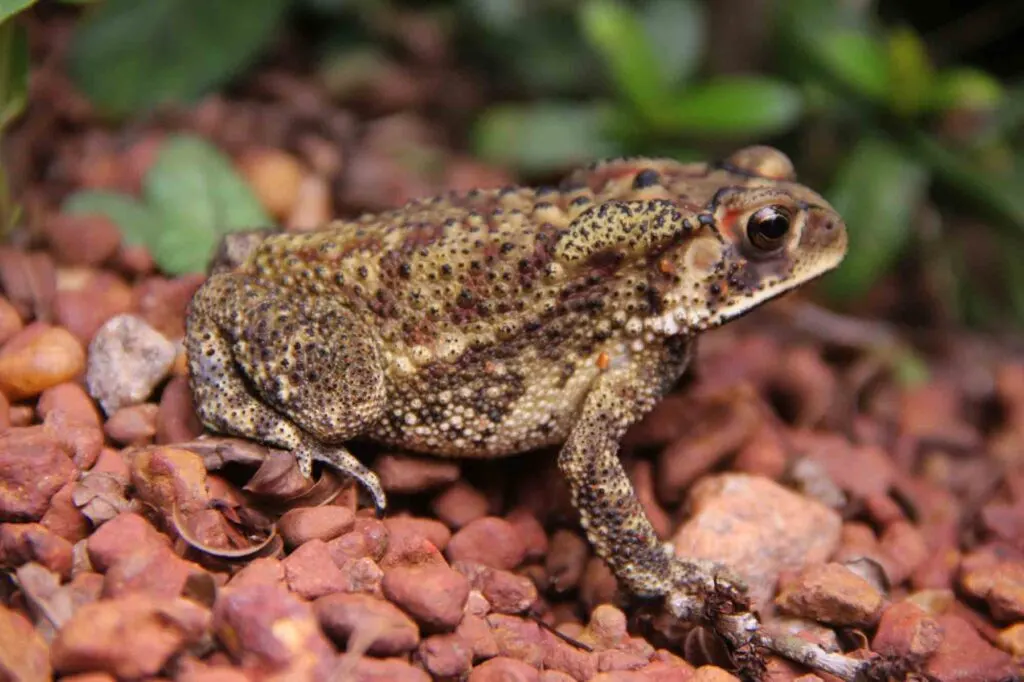
A frog species found mainly in Mexico and the United States, the lowland leopard frog prefers freshwater lakes, forests, and rivers.
Basically, they thrive in greenery and blend in well in the environment with their green body with small black spots on them.
Leopard Gecko
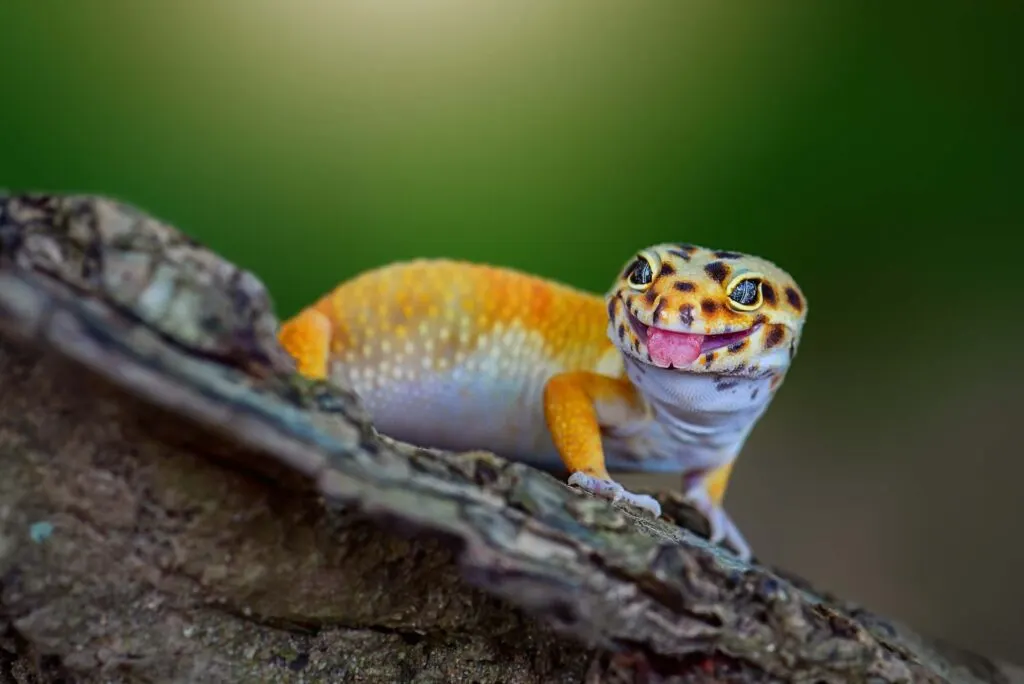
A desert lizard native to South Asia, the leopard gecko has a leopard print on its body. They grow about 9 inches in length.
Unlike other gecko species, despite having a voice, they do not use it often. Sometimes, when they’re agitated, a bark-like sound comes out of them.
Long-Tailed Tit
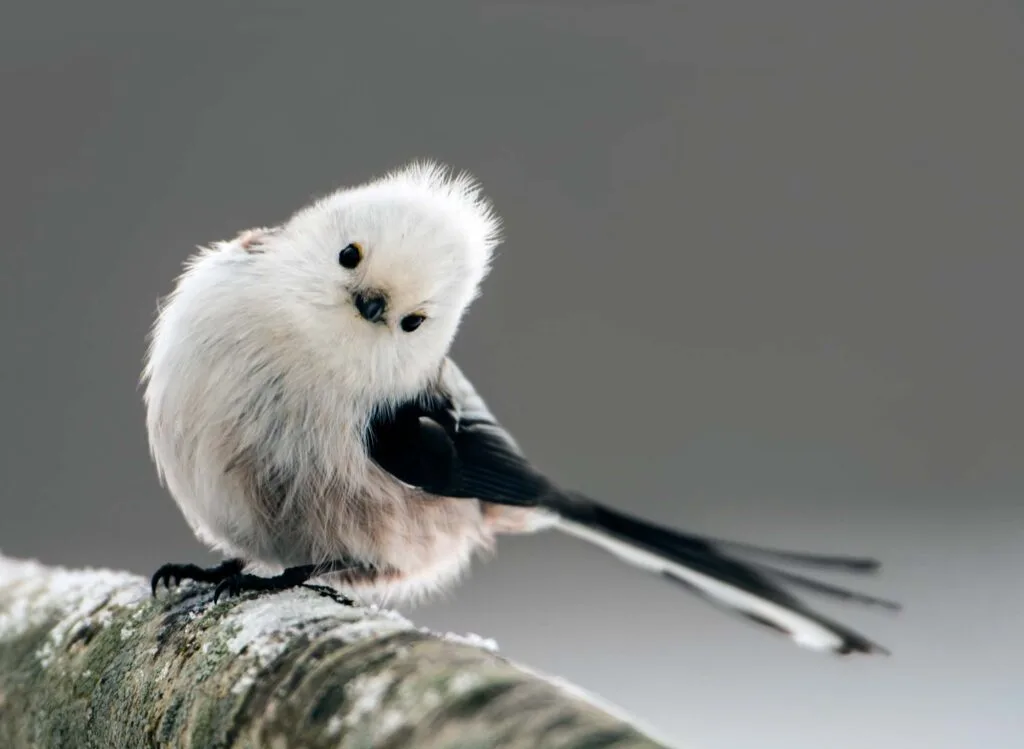
As their name would lead you to believe, this species of tit do have a body smaller than their tail.
While feeding, they hang upside down and produce this sweet, high-pitched song with a bit of purr in it. The notes sound like “prt, prt.”
Longnose Gar
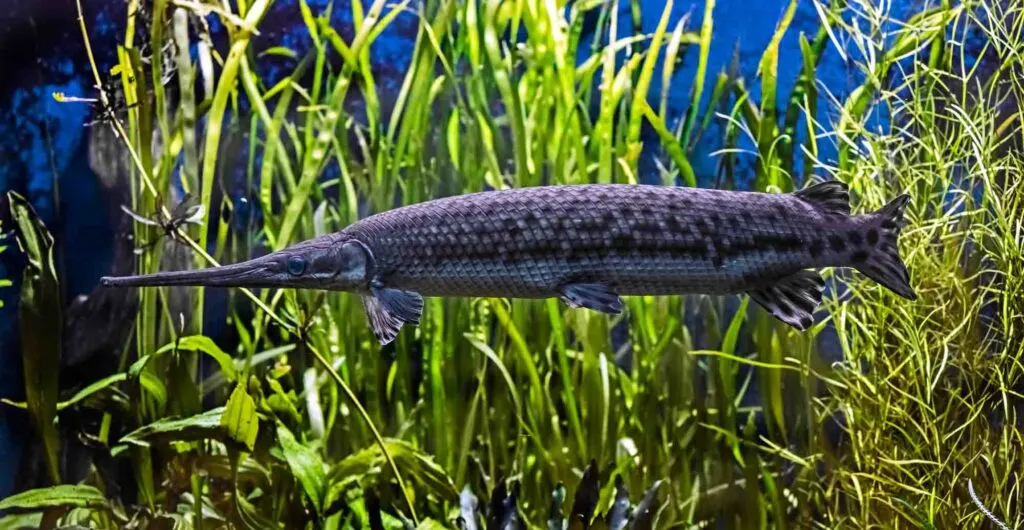
A ray-finned fish species, longnose gar, is also known as Billy gar.
Female longnose is longer than the male ones. The species is suspected of having survived for over 100 million years. They have a long lifespan for fishes, living for 20 years.
This fish is found in freshwater in North America, Central America, and Cuba.
Little Lorikeet
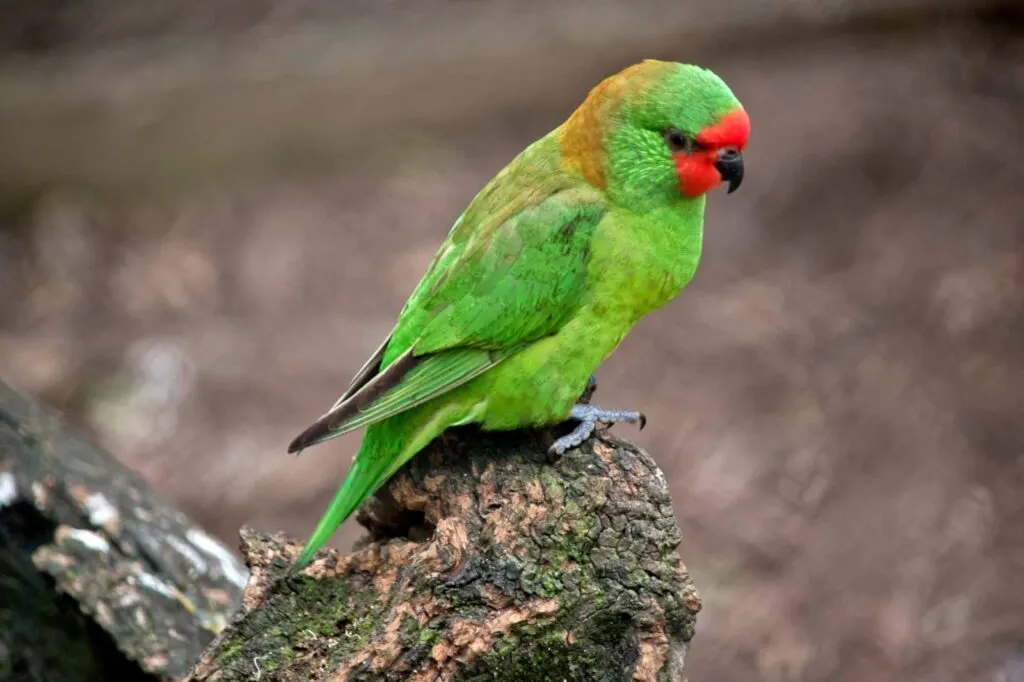
Little lorikeet is a small parrot species native to Australia. They have a vastly green plumage with a bit of red on the face and a dark beak.
These Australian animals have loud, high-pitched calls that veer off into lisps sometimes.
Lumpfish
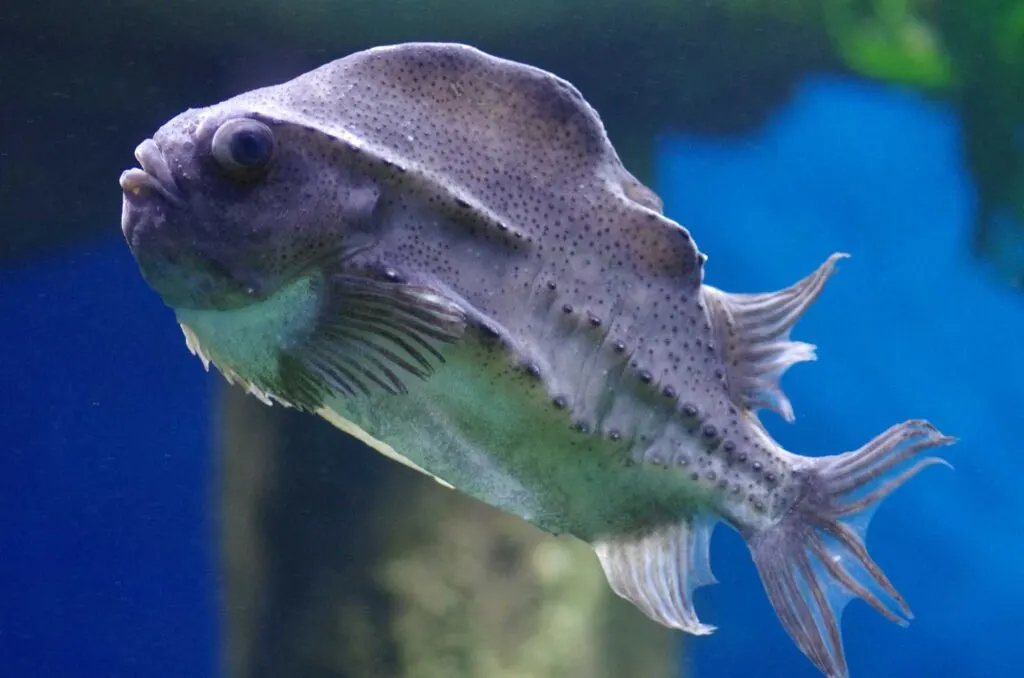
Lumpfish are marine fishes where the female lumpfish are bigger than male ones, reaching about 20 inches in length.
They have a round body, a small head consisting of cone-like teeth, and a tail that’s lumpy. They’re usually found at the bottom of the ocean.
Lion’s Mane Jellyfish
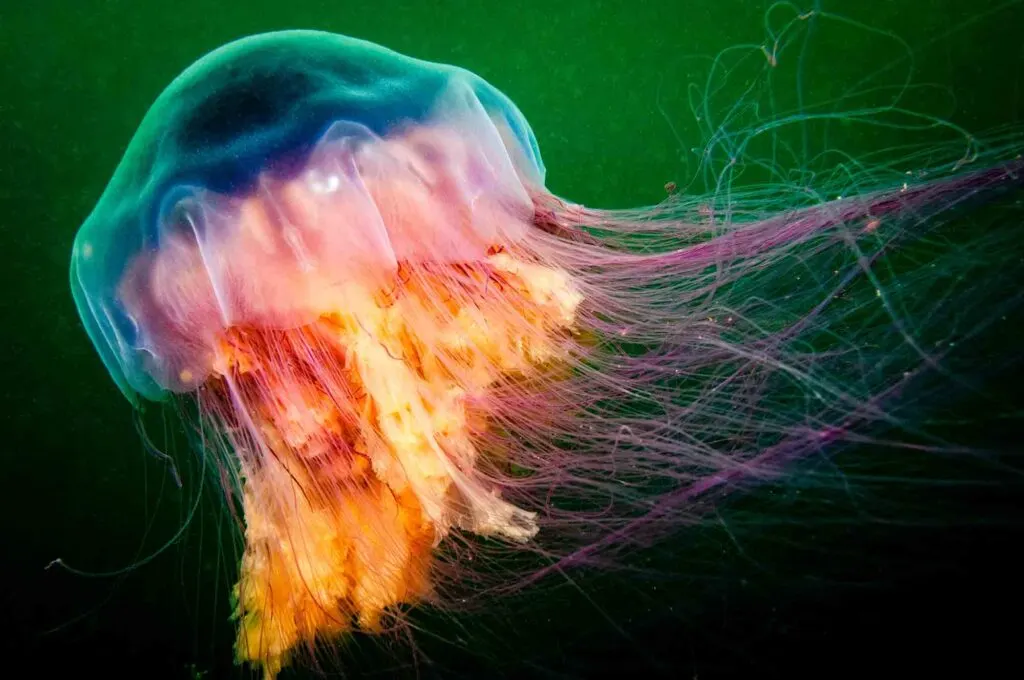
One of the largest jellyfish species in the world, lion’s mane jellyfish get their name from their long tentacles that cascade like a lion’s tail.
They have about 1,200 tentacles, all amounting to eight separate clusters. Their strings are painful for humans.
Animal Alphabet List
Animals With L
We hope you enjoyed this fun animal list! Feel free to share it with your friends on social media.
Are we missing any animals beginning with L? Then let us know in the comments, and we will update this list! 😉
